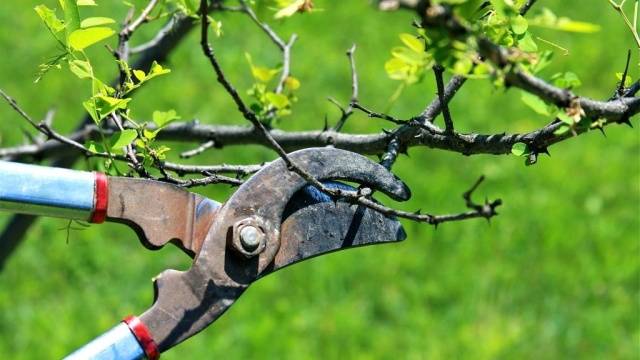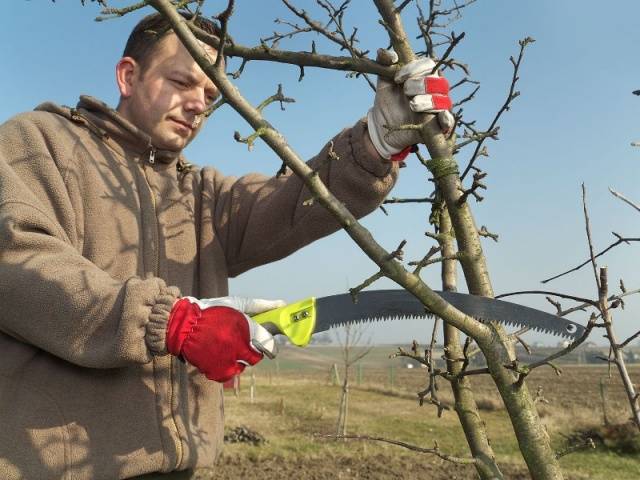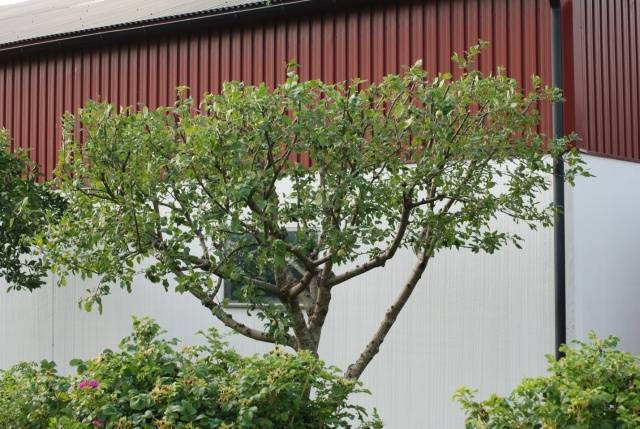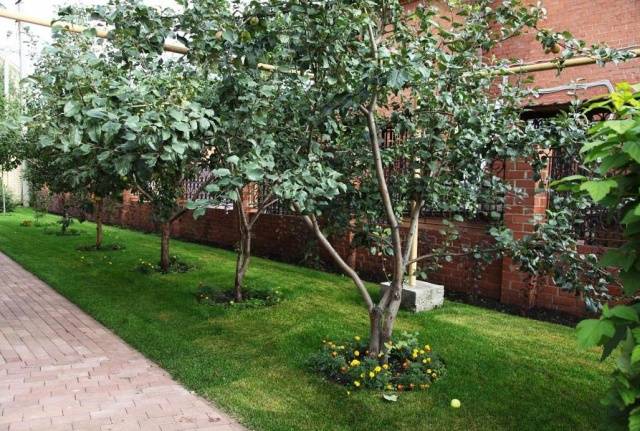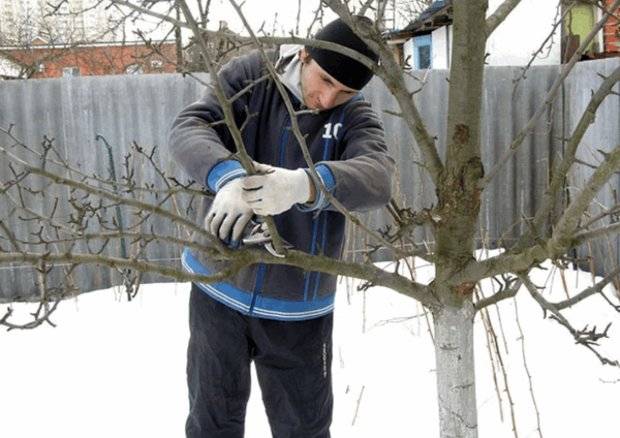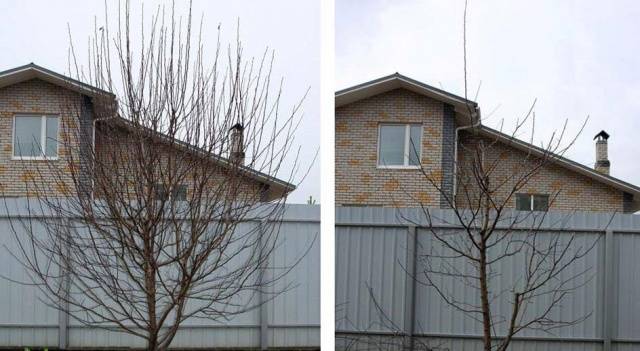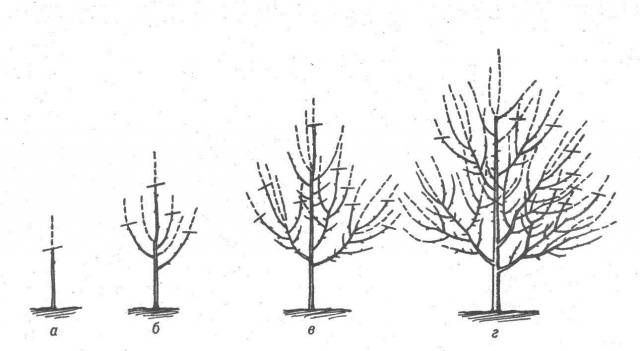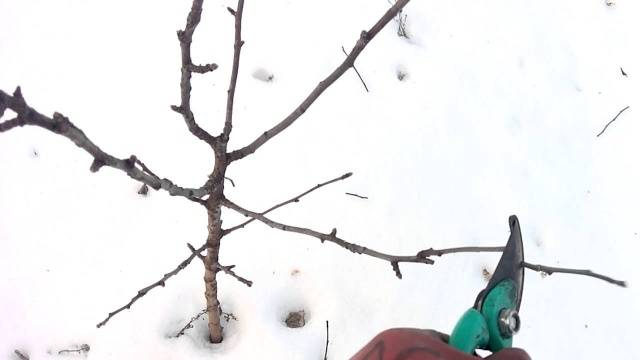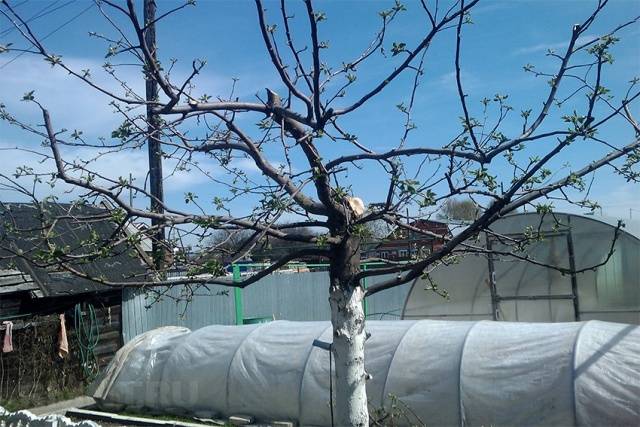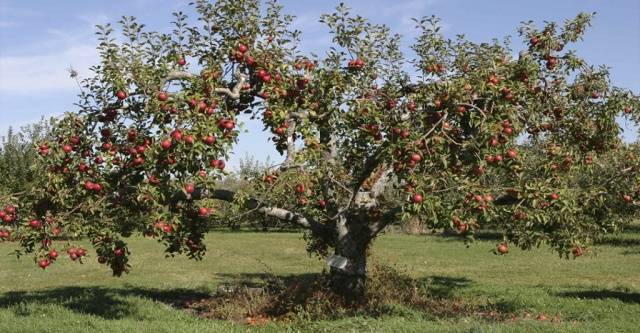Content
Sad stories of summer residents that a purchased seedling only enjoyed a couple of years with good yields of large fruits, and then fruiting sharply deteriorated, can be heard often. In such situations, gardeners blame a poor-quality variety, bad weather, and look for reasons in other external factors. If you look at such a tree up close, you can see a thickened crown, many old shoots, bare branches - all this is evidence of incorrect or completely absent pruning. Pruning fruit trees and shrubs is an essential part of care, responsible for the growth and health of the plant, its yield, the quality and size of the fruit. It is necessary to prune the garden several times a year, but the most important stage of this process occurs in the spring.
How and when to prune fruit trees in the spring will be described in this article. The basic rules for pruning, its types and methods of implementation will be listed here.
When to prune a garden
First of all, the gardener must understand that any, even the most correct and gentle, pruning is an injury to the tree. Therefore, it is very important to choose the right time for this event, when the plant will tolerate trauma less painfully and can quickly heal wounds.
In principle, the garden needs to be pruned several times a year. Some gardeners recommend starting pruning of fruit trees and berry bushes at the end of winter, as soon as severe frosts recede.
Spring pruning of fruit trees and shrubs is the most important part of gardening. It is in the spring that old and dry branches are removed, damaged and diseased parts of the plant are cut out, the crown of the young is formed and the old trees in the garden are rejuvenated.
The optimal timing for pruning an orchard is in early spring - in most Russian regions, these are done from mid-March to early April. After winter, the gardener should go out into the garden as soon as the snow begins to melt, around the end of February, early March. This is the best time to inspect trunks and crowns, remove winter shelters and rodent protection, and cut dry and broken branches.
When the air temperature stabilizes, and the thermometer does not drop below -5 degrees, you can engage in major spring pruning of trees. This must be done in dry weather in the absence of strong winds.
Basic Rules
When pruning a garden for the first time, it is very important not to harm the trees. It is better to first familiarize yourself with the special literature, consult with more experienced gardeners, see photos of pruning schemes or a video lesson from professionals.
After that, you should prepare the necessary tools: a garden knife, a saw, a pruner, a garden pitch for covering up large wounds. It is recommended to disinfect and sharpen the tool before work.
To get it right you need to adhere to these recommendations:
- The cuts should be straight and smooth. If the cut is not perfect right away, you need to trim and clean it with a sharp knife.
- It is recommended to cut young shoots above the buds that are on the outside of the branch. The cut should be oblique, it is carried out from the center of the tree outward.
- Shoots, which are a continuation of the trunk, after pruning should remain 20-30 cm longer than others.
- If the tree is weakened by disease or other factors, it should be cut as short as possible - 2-3 buds.
- Normally developing fruit trees are best pruned above the fifth or sixth eye.
- When the fruit variety is vigorous, you can apply a long pruning - leaving 7-8 buds on the shoots.
- If the branch needs to be removed completely, it is cut close to the trunk, leaving no stumps.
- Cutting out thick branches, they begin to file them from below, so that, suddenly breaking off, they do not damage the bark of the cut. Then perform the same cut from above, connecting the two cutting lines into a ring.
- It is better not to touch the trees frozen in the current winter, and to prune them only next spring.
- During pruning, the pruner is held so that its narrow part is directed towards the shoot.
- The guide - the central shoot - should be only one, all its "competitors" should be cut out.
- Small-diameter shoots must be trimmed so that the lower edge of the cut is in the lower part of the bud, and the upper edge coincides with the apex of the eye.
- It is important to adhere to one pruning scheme throughout the life of a tree. For most fruit trees with normal growth, a sparse-tiered pruning scheme is most suitable, involving the formation of a strong frame from skeletal branches.
- As long as the tree is young, pruning should not be excessive, as this can lead to stunted growth and deformation of the plant.
Methods and schemes
The pruning technique chosen by the gardener at the time of planting the seedling should depend on several factors. The most important of these are the age of the tree and its type. Globally, all methods of pruning fruit trees are divided into three types:
- Thinning. This method involves the complete removal of entire branches by cutting the shoots back to back against the trunk or larger branch from which they extend. Thinning does not affect the size of the tree in any way, it is necessary to reduce its weight. You should not get carried away with such pruning, because it does not stimulate the formation of young branches and increased fruiting. The thinning method is used to remove diseased, dry, old and excess shoots.
- Non-selective cropping. This technique is applicable to all young shoots that are shortened by making an oblique cut above the bud. The non-selective method is used both for crown formation and for tree rejuvenation. The result of this method is the active stimulation of dormant buds and the growth of new shoots.
- Selective cropping. In this case, the shoot is cut to the bud or to the side branch. It is important here that the diameter of the remaining lateral branch is half the thickness of the shoot to be removed. Young shoots up to 3 mm thick are cut into one peephole. The selective method helps to reduce the height of a shrub or tree without disturbing its shape. In other cases, it is better not to use the technique, since it is very aggressive and will negatively affect the amount of the crop.
Crown formation
Formative pruning is essential for all young trees. It begins from the second year of the seedling's life, and lasts at least 4-5 years. Knowledge of the characteristics of some fruit will help the gardener to correctly form the crown of the tree. So, apple and pear, for example, bear fruit on perennial shoots. And the fruits of plums and cherries appear on two-year-old branches a couple of years after planting.
The most common formative pruning options are tiered and sparse tiered. Most often, gardeners use a sparse-tiered scheme for pruning cherries, cherry plums, plums. A tree looks like a trunk and lateral branches extending from it with an interval of 20-25 cm, the number of which usually does not exceed ten.
To correctly form the crown of a young tree, you must follow the instructions:
- Annual seedlings without side branches should be shortened to 80 cm in spring. At least ten buds should remain on the guide (this will be the central shoot or tree trunk). In subsequent years, lateral shoots will grow from these eyes - the tiers of the tree. The emerging leaves on the stem are cut off to a height of 40 cm from the ground.
- Two-year-old trees leave 2-4 shoots - over time, they form the lower layer of skeletal branches. You need to leave the strongest and healthiest branches.
- In the third spring, it is necessary to form the second tier, its skeletal branches should be 70-100 cm from the base of the first tier. In the second tier, only two shoots are left, located at an angle of 45 degrees: the first is 50-60 cm from the trunk, the second is 40-45 cm from the first. The shoots growing between these two tiers are shortened by half.
- The next few pruning will consist of thinning the crown by cutting out branches growing deeper into the tree, twisted or weak shoots. If during this period the grower notices a stronger growth of the competitor of the conductor, then the active conductor will need to be cut into a ring. Otherwise, all competitors are removed.
- Formative pruning is completed when a tall tree reaches four meters in height (for dwarfs, 2 m is optimal). At this stage, it is necessary to remove the conductor above the upper shoot - this will stop the growth of the tree and complete the formation of its crown. The conductor should be cut into a ring.
Caring for mature trees
For the health of the garden and abundant fruiting, it is important to prune not only young, but also adult trees, which have been actively bearing fruit for several years. Pruning mature fruit trees is as follows:
- removal of old, dry and diseased shoots - annual sanitary pruning;
- thinning the thickened crown for better ventilation and lighting of branches and fruits;
- for trees with a pyramidal crown (for example, pears), it is necessary to lower all the growing shoots down, that is, remove the branches growing up;
- the rest of the trees with downward shoots require the removal of all branches directed downward - they leave shoots whose growth is directed to the top;
- for rejuvenation in old trees, the upper part of the trunk is cut out and the crown is carefully thinned out.
Conclusion
It is very difficult for a novice gardener to understand in words how to properly cut a fruit tree or shrub. therefore every beginner is advised to choose a pruning scheme even before spring comes, get acquainted with the technology for carrying it out, so that with the onset of heat, he will competently improve his garden.
Spring pruning is very important for the health and productivity of the orchard, so you should not neglect it. You can learn more about the methods of conducting this video.
